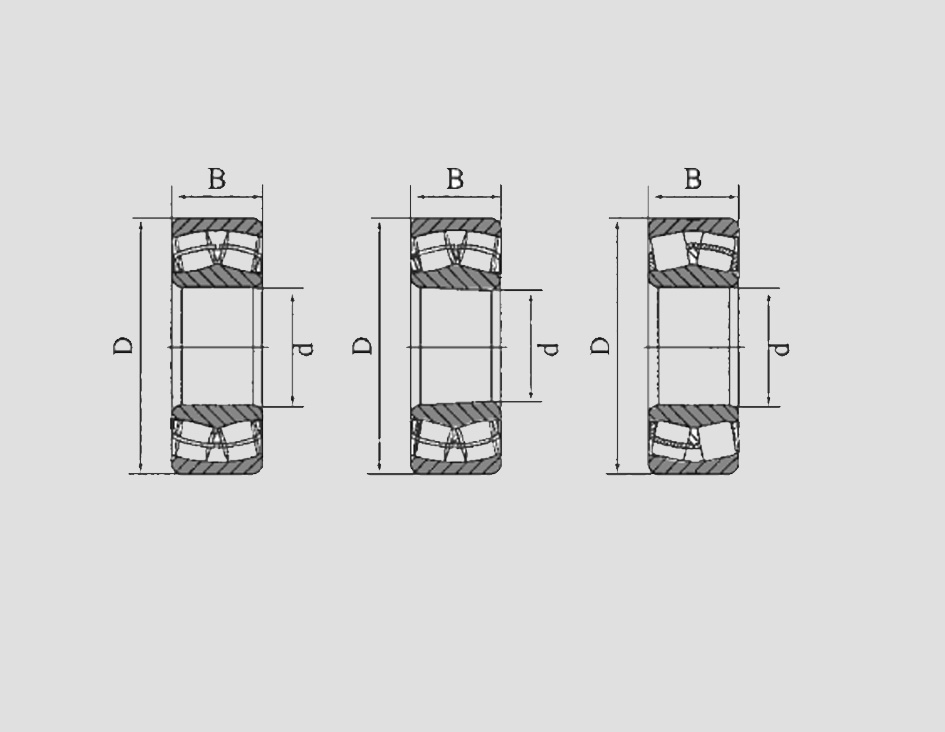
Nov . 06, 2024 07:19 Back to list
Exploring the Features and Applications of 51140 Bearing in Various Industries
Understanding the 51140 Bearing A Vital Component in Machinery
Bearings play a crucial role in the machinery and engineering sectors, enabling smooth operation and reducing friction between moving parts. One of the essential types of bearings is the 51140 bearing, which is widely used in various applications due to its unique characteristics and advantages. In this article, we will delve into the details of the 51140 bearing, exploring its design, applications, benefits, and maintenance practices.
What is a 51140 Bearing?
The 51140 bearing is a type of thrust bearing, specifically a thrust ball bearing. Thrust bearings are designed to support axial loads, meaning they can handle forces that act parallel to the shaft. This bearing is characterized by its sturdy design, featuring a flat seat on both sides and a set of balls that are situated between two races. The 51140 model is particularly distinguished by its inner diameter, outer diameter, and thickness, which makes it suitable for a variety of applications in different industries.
Design Features
The design of the 51140 bearing is engineered to facilitate the smooth rotation and support heavy axial loads. It typically consists of the following components
1. Races The inner and outer races provide a path for the balls to roll, reducing friction and wear. 2. Balls The balls are the key elements that carry the load and allow for smooth rotation. The arrangement and size of the balls are optimized to ensure even distribution of load and minimal wear. 3. Cage This component prevents the balls from coming into direct contact with each other. It helps in maintaining spacing and increases the longevity of the bearing. 4. Seal or Shield Depending on the application, the bearing may be fitted with seals or shields to protect against dust and contaminants, ensuring longer operational life.
The dimensions and materials used in the construction of the 51140 bearing can vary based on specific requirements. Common materials include steel and ceramic, which offer strength and resistance to wear.
Applications of the 51140 Bearing
The versatility of the 51140 bearing allows it to be employed in a wide range of applications
. Some common uses include51140 bearing

- Automotive Industry In automotive applications, the 51140 bearing is often used in manual transmissions and clutches, where it can handle high loads and provide smooth motion. - Industrial Machinery Various types of industrial equipment use this bearing for supporting axial loads, such as in presses, conveyors, and cranes. - Aerospace Applications The lightweight and durable nature of the 51140 bearing makes it suitable for use in aircraft, where reliability and performance are critical. - Marine Equipment In marine environments, these bearings can be found in winches and thrusters, where they withstand harsh conditions.
Benefits of Using the 51140 Bearing
The 51140 bearing offers several benefits that enhance the performance and longevity of machinery. These advantages include
1. High Load Capacity Designed to handle substantial axial loads, the 51140 bearing ensures stability and operational efficiency in demanding applications. 2. Reduced Friction The smooth motion of the balls minimizes friction between moving parts, leading to less wear and tear and extending the overall life of machinery. 3. Versatility Its ability to operate in various environments makes the 51140 suitable for a multitude of applications across different industries. 4. Easy Installation The design of the 51140 bearing allows for straightforward installation, making replacement and maintenance more manageable.
Maintenance of the 51140 Bearing
To maximize the lifespan and performance of the 51140 bearing, proper maintenance practices should be followed
1. Regular Inspections Frequent checks can help identify signs of wear or damage early, preventing unexpected failures. 2. Lubrication Adequate lubrication reduces friction and helps keep the bearing cool during operation. 3. Contamination Control Keeping the bearing free from dust and contaminants will protect it from premature failure. Using seals or shields can enhance this protection.
Conclusion
The 51140 bearing is a pivotal component in various industries, valued for its ability to support axial loads with minimal friction. Understanding its design, applications, benefits, and maintenance is essential for engineers and technicians working in machinery and mechanical systems. By leveraging the advantages of the 51140 bearing and adhering to proper maintenance practices, businesses can ensure optimal performance and longevity of their equipment, ultimately leading to increased efficiency and profitability.
Latest news
-
Premium Deep Groove Ball Bearings | High Speed & Reliability
NewsAug.29,2025
-
Durable Scaffolding Clamps - Secure & Reliable Tube Connectors
NewsAug.28,2025
-
Common Failures in Thrust Ball Bearings and Solutions
NewsAug.22,2025
-
How Tapered Roller Bearings Can Take Shock Loads
NewsAug.22,2025
-
Angular Bearings in High-Precision Spindles
NewsAug.22,2025
-
The Impact of Misalignment on Cylindrical Roller Bearing Performance
NewsAug.22,2025
